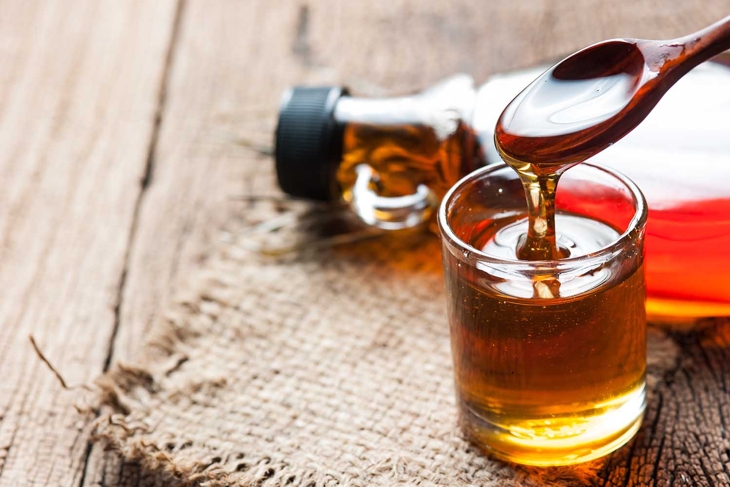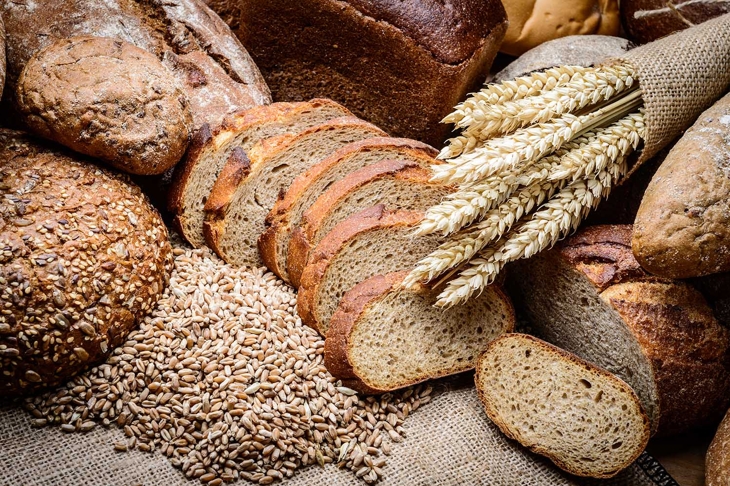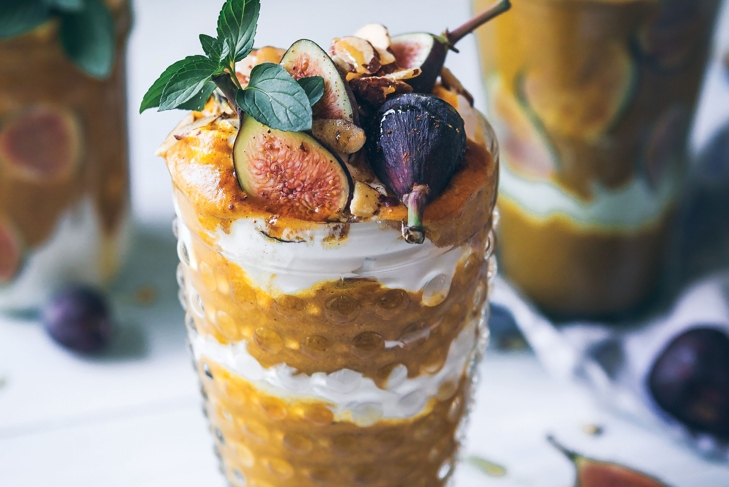Balanced Eating: The Cleanse You Can Stay on Forever
Get ready—not for a magic elixir, but to fall in love with food again.

Some foods are like bad boyfriends. It’s tough to break up with them, but once you do, you feel liberated. You wonder, “Why did I think I needed that in my life?”
You know the dietary deadbeats we’re talking about: refined, processed and chemically laden foods that give our bodies that much more work to do while putting us at risk of many chronic illnesses.
No wonder springtime inspires some of us to do a short-term cleanse or detox. But here’s the thing: if you make whole, organic foods the cornerstone of your diet, clean eating doesn’t need to be a spring fling. It just becomes a way of life.
Natural detox

We may take it for granted, but our bodies are detoxifying powerhouses. Each day the products of metabolism are broken down and excreted through our skin, lungs, bowels and kidneys: key players in the body’s detoxification system.
The liver is a hub in this elegant system, transforming toxic compounds into substances that we can safely release. Unfortunately, common conditions like diabetes, obesity and inflammation can impair our liver function, putting the brakes on our ability to eliminate unwanted substances. A constipated digestive tract only makes matters worse.
The best way to rev up our natural detoxification process is simply to eat nutritious whole foods to support and balance our bodies. We can achieve this through choosing a gentle, sustainable approach to eating.
But first comes the breakup.
Breakup: Skip the spoonful of sugar
“You used to be so sweet …”
High worldwide rates of obesity, diabetes and poor dental health have prompted the World Health Organization (WHO) to propose that each person consume no more than 12 tsp (50 g) of sugar per day. Reducing sugar consumption to 6 tsp (25 g) would have an even more substantial impact on health, according to the WHO.
Sugar-sweetened beverages account for a lot of our sugar intake. Nearly two-thirds of American youths and half of American adults drink a sugar-sweetened beverage on a given day. When you consider that a 20 oz bottle of soda contains 15 to 18 tsp (60 to 75 g) of sugar, you can see how that adds up. The high fructose corn syrup used to sweeten many soft drinks has links to metabolic syndrome, fatty liver disease and diabetes. Even pure apple or orange juice may contain 5 tsp (20 g) of sugar per cup, potentially raising diabetes risk with only three servings per week.
Read it and weep (or just quietly put it back on the shelf)
Read nutrition labels carefully: 4 g sugar equals approximately 1 tsp sugar.
Try topping your smoothies with whole foods. You’ll get a super-abundant aesthetic (that says “I just popped out back to my family’s 100-year-old orchard”), and you may find it’s more satisfying than a purely liquid smoothie.
Supportive supplements

Eating a healthy diet is the first step in an effective detoxification plan, but if you need some additional support, consider these options with the help of your health care practitioner.
Turmeric
Curcumin, an active component of this traditional Indian spice, helps to reduce inflammation in the intestinal tract.
Fiber
Add chia, flax or psyllium to your diet and increase water intake to help ensure regular bowel function.
Dandelion
Dandelion has a long history of use in traditional medicine as a cleansing agent and is a natural diuretic.
Milk thistle
This plant may provide natural support for liver cells and aid in their regeneration.
Alpha-lipoic acid (ALA)
This anti-inflammatory and antioxidant reduces damage that may be caused within our bodies during normal metabolic activity.
Spartan race
Make a beeline for the apples next time you’re grocery shopping. Whole fruits, particularly blueberries, grapes and apples, have been significantly associated with a lower risk of type 2 diabetes. Drinking more fruit juice is associated with a higher risk.
The new relationship

Plenty of sweeteners in the store
The glycemic index of sugar (see sidebar) can cause yo-yoing blood sugar levels and energy crashes.
- Bake with bananas, applesauce or fresh fruit purees of your own invention. Replace 1 cup sugar with 1/2 to 1 cup fruit puree. If using fresh fruit, reduce other wet ingredients by 1/4 cup.
- Maple syrup has a moderate glycemic index but is still up to 85 percent sugar. Use sparingly in beverages and baking.
- Yacon syrup, sourced from a South American tuber, is gaining popularity; it has a low glycemic index and half the calories of sugar.
- Agave syrup has a low glycemic index and is made from the Mexican aguamiel plant. Use in moderation due to its caloric and fructose content.
Find a better beverage bae
Skip sweet drinks and swipe right on these tasty thirst quenchers.
- Infuse plain water with fruit (berries, pomegranates, pears); herbs (mint, lemon balm, cilantro); spices (ginger, cinnamon, cardamom); or vegetables (cucumber, celery, fennel).
- Have water within easy reach all day.
- Try tea on ice, choosing naturally sweet flavors like rosehip, hibiscus or licorice.
- Dilute sweet drinks with plain or carbonated water; gradually increase the water content until you can eliminate the sweetened drink completely.
- What makes your favorite sweet drinks so appealing? Flavor? Nostalgia? Energy? Entertainment value? Understand your associations and triggers to help reduce your cravings.
Breakup: Eliminate processed foods

“You’re not being real with me.”
Although convenient, processed foods burden our bodies with an abundance of extra fats, sugars, salt and calories.
What are the consequences of an ultra-processed diet, aside from bursting global waistlines? Fat-laden, fiber-free foods leave you hungry for essential vitamins, antioxidants, fiber and other nutrients. Even worse, their arsenal of mostly unpronounceable additives, preservatives and stabilizers only heightens the need for detoxification in the body.
The new relationship

Be wooed by whole foods
Sometimes you want to go back to your ex. We’ve all been there. Resisting the pull of processed foods may be easier with these strategies.
Stash snacks
Trade the unhealthy chocolate bar or chips for some nuts and an apple. Stow snacks in your car, office or stroller for on-the-go-options any time.
Increase your kitchen efficiency
Take half an hour to plan your week’s meals and shop once. Simple protein/vegetable combos will nourish and satisfy. Make double batches to freeze for a rainy day; try cooking with friends and family members for fun and inspiration.
Check out healthy food delivery
Local chefs and plant-forward startups offer health-conscious prepared meal services. If cooking simply isn’t an option, make this investment in your health.
Go full private eye on your groceries
Expose the sugar hiding in your kitchen condiments, breads and even salt. Switch to low-additive, high-fiber foods.
Breakup: Walk on the refined flour

“There’s just nothing here.”
Modern flours are often processed and stripped of their essential nutrients and fiber, making them more shelf-stable and appealing to some palates. Selected nutrients are added back into the mix, but not in the same quantity as in the original flour.
While manufacturers defend fortification, the proof really is in the (bread) pudding. Studies consistently show that whole grains, rather than fortified refined grains, reduce cholesterol levels, promote weight loss and help protect against cancers and diabetes.
Aside from spiking blood glucose, low-fiber foods are a well-known risk factor for constipation, compromising one of the simplest ways to detoxify the body.
The new relationship

Get monogamous with whole grains
Whole grains give you a fiber fix, which can help you stay regular. Talk about relationship stability.
- Scour product ingredient listings and select only those that specify “whole” before the name of the grain.
- Beware of multigrain imposters: the multiple grains in a product may all be refined.
- Consider easy-to-digest sprouted grain products that use unrefined, mashed whole wheat rather than flour.
- Avoiding wheat? Choose healthy alternatives by reading labels carefully. Wheat- and gluten-free products may contain less fiber and more fat and sugar than their wheat-filled counterparts.
- When increasing dietary fiber, drink 8 cups (2 L) of water each day to keep your bowels moving.
Nothing can beat the natural detoxifying power that’s already within you. Use simple strategies to eat clean, healthful foods, then stand back and let your beautiful body do the rest.
Don't regret it in the morning

Cereal killer
Leave the cereal box high and dry. Instead, try this two-minute wake-up smoothie. Blend water, plain nondairy yogurt or a quarter of an avocado, banana, mixed frozen berries, flax and protein powder. Pour and go.
White fright
The glycemic index of one slice of white bread (70) is higher than 1/4 cup of white sugar (60), thanks to white bread’s lack of soluble fiber.
The glycemic index demystified

The glycemic index (GI) of a food ranks its ability to raise blood glucose. Foods with a high GI (70 or higher) are rapidly metabolized, spiking blood sugar levels, while low GI foods (55 or lower) cause a more gradual rise, if any. Low GI diets can improve blood glucose control in diabetics and support weight loss, while high GI diets increase the risk of heart disease and some types of cancer. You know which diet you want to commit to...




